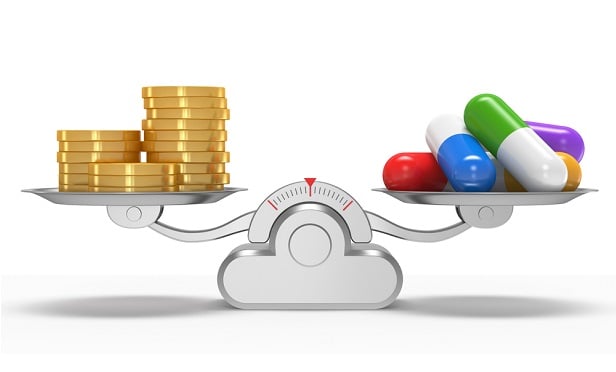 Mylan CEO Heather Bresch urges companies footing the bill for employee health costs to examine the instances in which plans aren't steering patients toward the cheapest available treatments. (Image: Shutterstock)
Mylan CEO Heather Bresch urges companies footing the bill for employee health costs to examine the instances in which plans aren't steering patients toward the cheapest available treatments. (Image: Shutterstock)
Generic drugmakers are being crushed by the very forces that the Trump administration is counting on to drive down prescription costs.
While policy makers are betting that opening the market to a deluge of new medicines and reforming the drug supply chain will help contain rising prices, many widely used copycat medications are already seeing their prices fall at such a rapid rate that their makers are struggling to keep their heads above water.
Related: The best fix for drug prices is already on the books
As a result, companies including Mylan NV and Perrigo Co. are being forced to consider shakeups. Mylan's board said this week that it would consider radical changes to its business, while Perrigo said it would separate its generic business.
Both Mylan and Perrigo had been wagering that manufacturing new, cheaper alternatives to pricey complex treatments for cancer, arthritis and other diseases would help to offset the broader pain facing generic-drug firms. But the companies have encountered sizable hurdles in bringing them to market, including regulatory snags and legal battles over patents.
Meanwhile, rattled investors have fled. Perrigo shares have fallen 19 percent so far this year — including a decline of more than 10 percent on Thursday — while Mylan shares have dropped more than 12 percent in 2018, trailing the nearly 5 percent gain for the S&P 500 pharmaceutical subindex.
Formulary friction
Facing the dropoff in prices of simpler medications, Mylan has attempted to bring lower-priced versions of the expensive multiple sclerosis drug Copaxone to market. Mylan's drug was approved after delays, but it has yet to make a major dent in the market. The company blames pharmacy-benefit managers, middlemen who negotiate drug costs for health plans, for not always steering patients to less-expensive alternatives.
Mylan Chief Executive Officer Heather Bresch, on a conference call with investors Wednesday, urged companies footing the bill for employee health costs to examine the instances in which plans aren't steering patients toward the cheapest available treatments.
“I would like to call to action that the C-suite in corporations around the United States be looking at those formulary tiers,” Bresch said, referring to the lists of preferred medicines kept by benefit managers.
After Mylan cut the price of its version of Copaxone by 60 percent, Bresch said some plans still favored the higher-priced brand-name drug. She called that example “representative of the perverse incentive embedded in the current system.” Many drugmakers have decried the rebates, which can sway decisions about which drugs are used and which aren't.
“The business of health care feeds on higher prices,” she said.
For Perrigo, simply getting its version of inhaler ProAir approved by U.S. regulators has been a problem. The drugmaker has said it no longer expects to launch its lower-priced version in the fourth quarter as it works through the regulatory process.
Favoring brands
Patent fights have also kept competitors for some high-priced biologic drugs off the market. Just four of the 12 approved biologic copycat drugs are actually being sold, according to the generic-drug industry group the Association for Affordable Medicines, despite a push by the U.S. Food and Drug Administration to approve more such medications.
Even when copycats reach the pharmacy, drug plans have been accused of favoring the more expensive brand names. Pfizer Inc. sued rival Johnson & Johnson last year, alleging that its cheaper version of J&J's rheumatoid arthritis drug Remicade hasn't had a fair shot because J&J has used the formulary system to push its drug. J&J has said the suit is without merit.
The Trump administration has focused on formularies and rebates in its efforts to contain drug costs, proposing changes to antikickback rules and other regulatory steps to increase transparency.
In the meantime, the middlemen are gaining muscle. Just four groups controlled 90 percent of generic-drug buying in 2017 in the U.S., according to Adam Fein, chief executive officer of consultant Drug Channels Institute — and two have plans to join forces, likely giving them even greater leverage.
— With assistance by Jared S Hopkins
© Touchpoint Markets, All Rights Reserved. Request academic re-use from www.copyright.com. All other uses, submit a request to [email protected]. For more inforrmation visit Asset & Logo Licensing.






